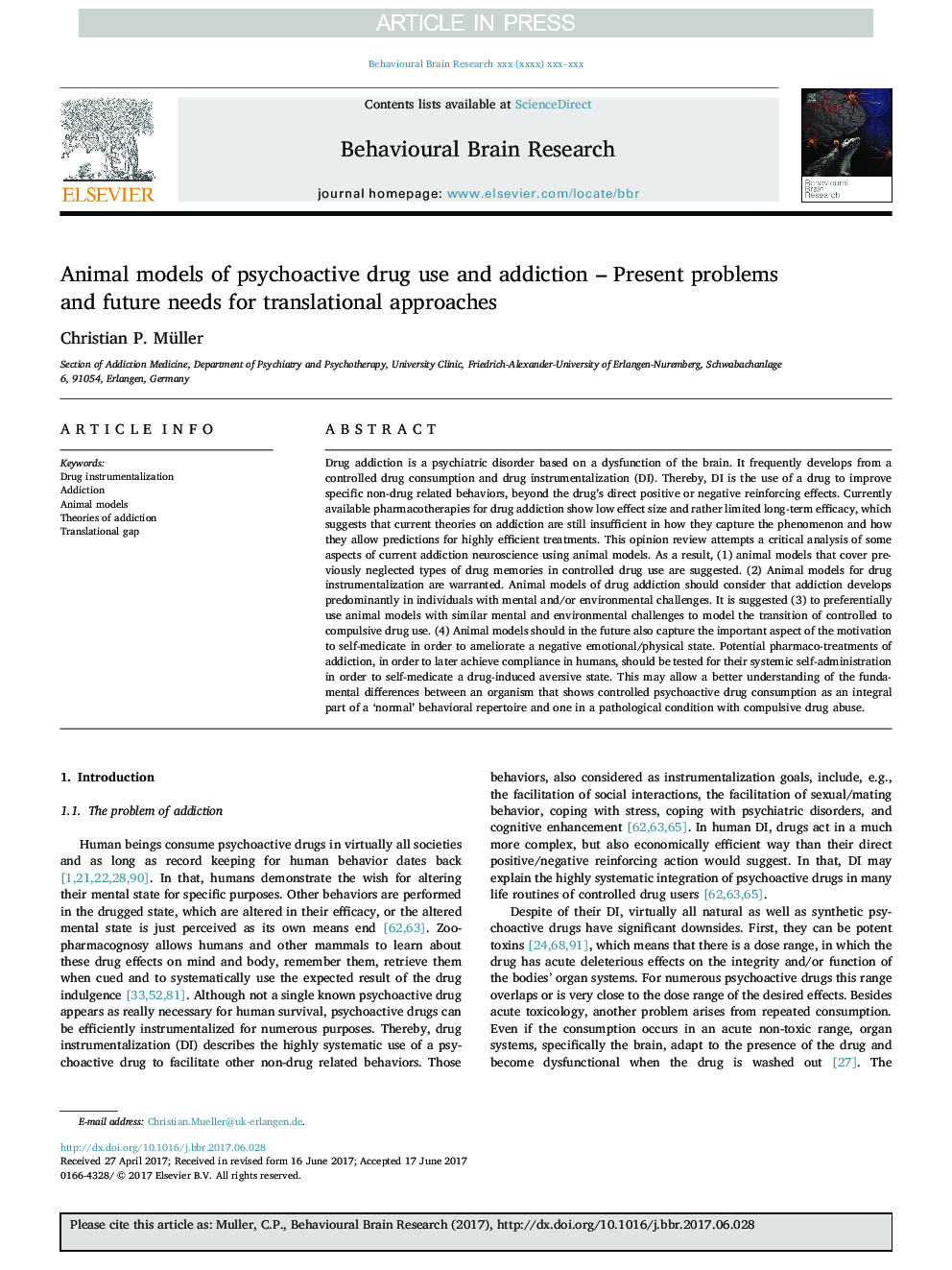| کد مقاله | کد نشریه | سال انتشار | مقاله انگلیسی | نسخه تمام متن |
|---|---|---|---|---|
| 8837656 | 1612883 | 2018 | 7 صفحه PDF | دانلود رایگان |
عنوان انگلیسی مقاله ISI
Animal models of psychoactive drug use and addiction - Present problems and future needs for translational approaches
ترجمه فارسی عنوان
مدل های حیوانی مصرف مواد روانگردان و اعتیاد - مشکلات موجود و نیازهای آینده برای رویکردهای ترجمه
دانلود مقاله + سفارش ترجمه
دانلود مقاله ISI انگلیسی
رایگان برای ایرانیان
کلمات کلیدی
ابزار سازی مواد مخدر، اعتیاد، مدل های حیوانی، نظریه های اعتیاد، شکاف ترجمه،
موضوعات مرتبط
علوم زیستی و بیوفناوری
علم عصب شناسی
علوم اعصاب رفتاری
چکیده انگلیسی
Drug addiction is a psychiatric disorder based on a dysfunction of the brain. It frequently develops from a controlled drug consumption and drug instrumentalization (DI). Thereby, DI is the use of a drug to improve specific non-drug related behaviors, beyond the drug's direct positive or negative reinforcing effects. Currently available pharmacotherapies for drug addiction show low effect size and rather limited long-term efficacy, which suggests that current theories on addiction are still insufficient in how they capture the phenomenon and how they allow predictions for highly efficient treatments. This opinion review attempts a critical analysis of some aspects of current addiction neuroscience using animal models. As a result, (1) animal models that cover previously neglected types of drug memories in controlled drug use are suggested. (2) Animal models for drug instrumentalization are warranted. Animal models of drug addiction should consider that addiction develops predominantly in individuals with mental and/or environmental challenges. It is suggested (3) to preferentially use animal models with similar mental and environmental challenges to model the transition of controlled to compulsive drug use. (4) Animal models should in the future also capture the important aspect of the motivation to self-medicate in order to ameliorate a negative emotional/physical state. Potential pharmaco-treatments of addiction, in order to later achieve compliance in humans, should be tested for their systemic self-administration in order to self-medicate a drug-induced aversive state. This may allow a better understanding of the fundamental differences between an organism that shows controlled psychoactive drug consumption as an integral part of a 'normal' behavioral repertoire and one in a pathological condition with compulsive drug abuse.
ناشر
Database: Elsevier - ScienceDirect (ساینس دایرکت)
Journal: Behavioural Brain Research - Volume 352, 15 October 2018, Pages 109-115
Journal: Behavioural Brain Research - Volume 352, 15 October 2018, Pages 109-115
نویسندگان
Christian P. Müller,
